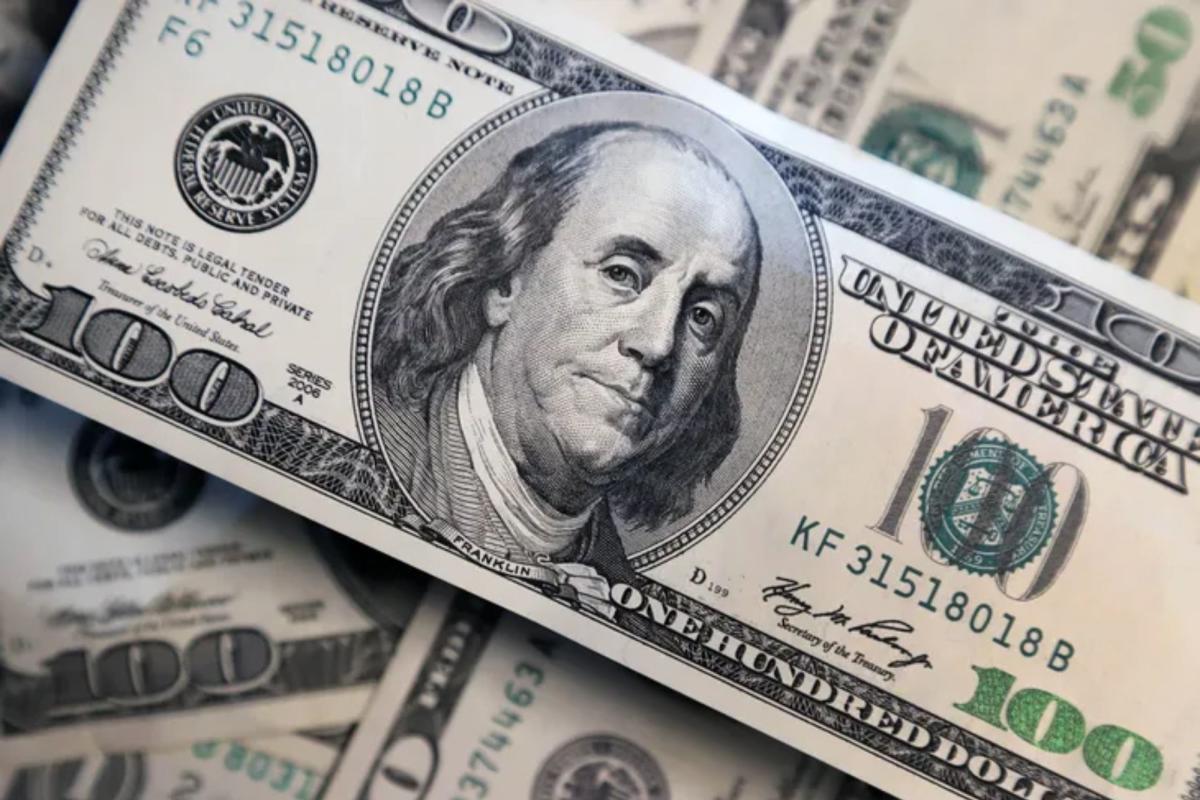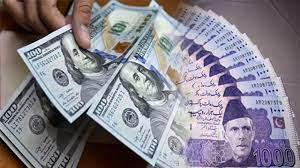Introduction To Dollar to PKR
The exchange rate between the US Dollar (USD), British Pound (GBP), and Pakistani Rupee (PKR) plays a crucial role in Pakistan’s economy, affecting everything from trade to inflation. Fluctuations in these rates are influenced by a variety of global and domestic factors, including economic policies, geopolitical events, and market speculation. Understanding the dynamics behind these currency exchange rates and their broader implications can provide insights into the challenges faced by Pakistan’s economy and its impact on the daily lives of people. he value of the Dollar to PKR and Pound to PKR exchange rates fluctuates regularly .
1. Understanding Exchange Rates: Dollar to PKR and Pound to PKR
Exchange rates are essentially the value of one currency when compared to another. In the context of Pakistan, two of the most important currencies for exchange rate analysis are the US Dollar (USD) and the British Pound (GBP).
- Economic Strength: The strength of Pakistan’s economy relative to the US or the UK has a direct impact on the exchange rate. A strong economy attracts foreign investment, which can boost the value of the rupee. Conversely, economic instability weakens the rupee.
- Trade Deficits: Pakistan frequently runs trade deficits, meaning it imports more than it exports. This creates a high demand for foreign currencies (like the USD and GBP) to pay for these imports, weakening the rupee.
- Foreign Exchange Reserves: Central banks manage exchange rates through foreign exchange reserves. If Pakistan’s foreign reserves are low, the PKR depreciates, leading to a higher Dollar to PKR or Pound to PKR exchange rate.
- Remittances: Pakistan relies heavily on remittances from overseas workers, particularly from countries like the US and the UK. These inflows provide critical support to the PKR by increasing the supply of foreign currency in the local market.
2. Dollar to PKR: Historical Trends and Current Scenario
The Dollar to PKR exchange rate has been on a steady upward trend for the past decade. Several reasons contribute to the depreciation of the Pakistani rupee against the dollar:
- Political Instability: Over the past years, political uncertainties in Pakistan have created a climate of uncertainty that deters foreign investors. As a result, the demand for the dollar rises while the supply of rupees increases, further weakening the PKR.
- Inflation: Pakistan’s inflation rate plays a significant role in weakening the rupee. High inflation reduces the purchasing power of the rupee, making foreign goods more expensive and increasing the demand for the dollar to facilitate trade.
- External Debt: Pakistan has a significant amount of external debt, much of which is denominated in USD. Repaying these debts requires dollars, placing further strain on foreign exchange reserves and driving up the Dollar to PKR rate.
In recent years, the Dollar to PKR rate has seen a sharp rise, with the value of the rupee falling consistently against the dollar. For example, in 2010, 1 USD was equivalent to around 85 PKR, while in 2024, it has crossed 300 PKR. This significant depreciation highlights the economic challenges Pakistan faces in maintaining a stable currency.
Factors Affecting the Dollar to PKR Exchange Rate:
- Interest Rate Differentials: Higher interest rates in the US attract foreign investments, leading to a higher demand for dollars and a weaker PKR.
- Energy Imports: Pakistan is a net importer of energy, and as global oil prices rise, the country must use more USD to purchase oil, leading to a higher Dollar to PKR rate.
- Economic Policies: Pakistan’s fiscal and monetary policies, including decisions by the State Bank of Pakistan (SBP) to raise or lower interest rates or intervene in the currency market, have direct effects on the Dollar to PKR rate.
3. Pound to PKR: Historical Trends and Current Scenario
Similar to the Dollar to PKR, the Pound to PKR exchange rate has also shown a trend of appreciation, meaning the British Pound has grown stronger relative to the Pakistani Rupee over time. The Pound to PKR rate is influenced by both global events and local factors:
- Brexit: The UK’s exit from the European Union had a temporary impact on the GBP, causing volatility in its exchange rate. However, over time, the GBP has regained strength against weaker currencies like the PKR.
- UK Economy: A robust UK economy strengthens the GBP, meaning that the Pound to PKR rate increases as the PKR struggles to keep up.
- Trade Relations: Pakistan and the UK share a strong trade relationship, particularly in textiles. However, fluctuations in the global market and changes in tariffs post-Brexit can affect the Pound to PKR rate.
The Pound to PKR exchange rate has followed a similar trajectory to the Dollar to PKR rate, with the rupee consistently losing value. In 2010, 1 GBP was around 130 PKR. By 2024, the rate has surpassed 400 PKR, reflecting the continuing depreciation of the rupee.
Factors Affecting the Pound to PKR Exchange Rate:
- UK Economic Data: Data such as GDP growth, employment rates, and inflation from the UK can have a direct impact on the strength of the GBP.
- Tourism and Migration: Many Pakistanis live and work in the UK, sending remittances back home. A higher influx of GBP into Pakistan provides some support to the rupee, but the large demand for GBP for trade and foreign investment tends to keep the Pound to PKR rate elevated.
- Global Markets: The GBP is also influenced by events in Europe, the US, and other major economies. Any major shifts in global financial markets tend to create ripple effects on the Pound to PKR exchange rate.
4. Implications of Rising Exchange Rates
The rising Dollar to PKR and Pound to PKR exchange rates have significant implications for Pakistan’s economy:
- Inflation: As the rupee depreciates, the cost of imported goods, particularly oil and essential commodities, rises. This leads to higher inflation, which directly impacts the cost of living for the average Pakistani.
- Foreign Debt: Pakistan’s external debt becomes more expensive to service as the rupee weakens. The government needs more PKR to repay its USD or GBP-denominated loans, which further strains the economy.
- Imports and Exports: While a weaker rupee makes Pakistan’s exports more competitive globally, it also raises the cost of imports. Given Pakistan’s reliance on imported energy and machinery, the rising Dollar to PKR and Pound to PKR rates put a significant burden on the trade balance.
- Remittances: A silver lining of the rupee’s depreciation is that remittances from Pakistanis abroad, particularly from the US and UK, become more valuable. This provides some relief to households reliant on foreign remittances.
5. The Role of the State Bank of Pakistan
The State Bank of Pakistan (SBP) plays a critical role in managing exchange rate fluctuations. The central bank often intervenes in the foreign exchange market to stabilize the PKR by buying or selling foreign currency reserves. Additionally, the SBP sets interest rates and implements monetary policies aimed at curbing inflation and stabilizing the economy.
In response to the rapid depreciation of the rupee, the SBP has raised interest rates in recent years to curb inflation and attract foreign investment. However, these measures have not been enough to offset the broader structural issues affecting the Dollar to PKR and Pound to PKR exchange rates.
6. Conclusion
The exchange rates of Dollar to PKR and Pound to PKR are critical barometers of Pakistan’s economic health. The persistent depreciation of the rupee against major currencies like the USD and GBP reflects the challenges the country faces, from political instability and inflation to trade deficits and external debt. While remittances and exports offer some respite, the long-term solution to stabilizing the exchange rate lies in addressing the structural issues within the economy. Strengthening foreign reserves, reducing dependence on imports, and implementing sound fiscal policies will be essential steps in stabilizing the PKR and creating a more sustainable economic future for Pakistan.















